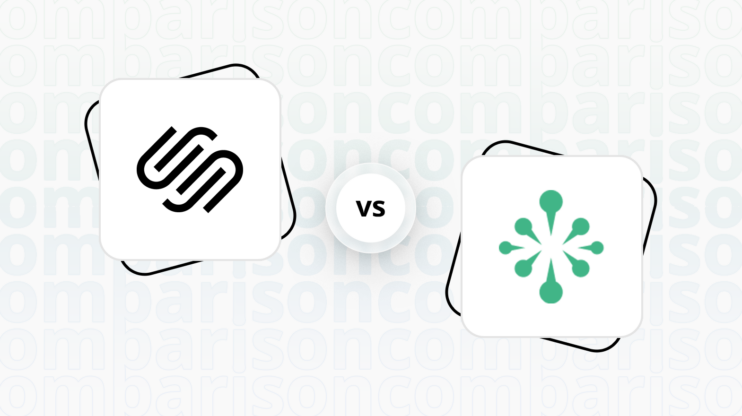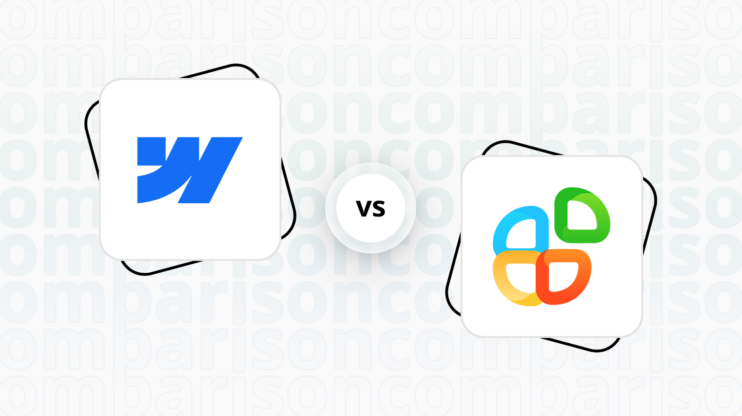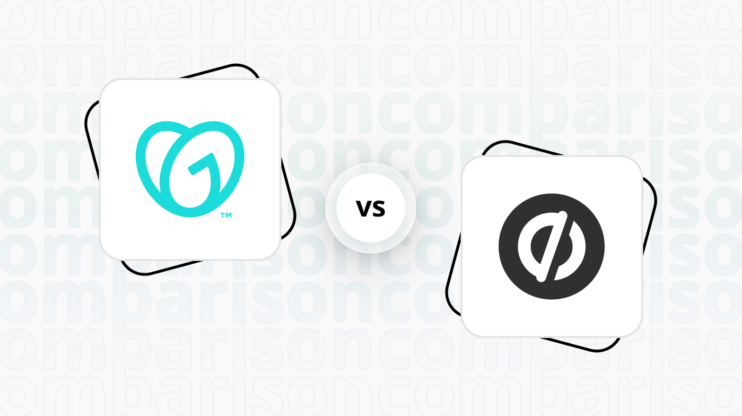Final verdict
SubHub vs Jimdo: Both platforms cater to different needs, with Jimdo offering a more versatile and user-friendly experience, while SubHub focuses on membership-based websites.
-
SubHub (Overall Grade: 5.6/10)
is tailored for content creators and entrepreneurs looking to build and monetize membership sites. It offers a range of tools for managing subscriptions, member access, and exclusive content. While it excels in providing comprehensive learning resources and specific ecommerce features for digital products, it lacks the advanced design functionalities and broader ecommerce capabilities found in other platforms. SubHub is ideal for users who prioritize ease of use and efficiency in managing membership-based businesses. -
Jimdo (Overall Grade: 7.2/10)
stands out with its simplicity and ease of use, making it suitable for a wide range of users, from personal blogs to small businesses and ecommerce entrepreneurs. Jimdo offers a diverse range of templates, AI-driven design suggestions, and comprehensive marketing tools. It excels in providing a user-friendly interface, robust ecommerce features, and a variety of plugins and integrations. Jimdo is perfect for users who need a versatile and accessible platform for creating and managing their online presence.

|

|
|
|---|---|---|
|
Design functionalities & templates |
6.8 |
7.2 |
|
Ease of use |
7.7 |
8.0 |
|
Ecommerce |
5.9 |
7.0 |
|
Website Editors |
6.9 |
7.8 |
|
Product testing options |
7.0 |
6.4 |
|
Price |
6.8 |
7.5 |
|
Hosting quality |
5.5 |
6.7 |
|
Website speed optimization |
5.6 |
7.6 |
|
Plugins and integrations |
5.7 |
7.4 |
|
Marketing features |
5.7 |
7.2 |
|
Customer support |
6.3 |
6.8 |
|
Security |
4.0 |
8.3 |
|
AI capabilities |
0 |
6.0 |
|
User Management |
5.2 |
5.8 |
Best for ecommerce
 5.9
5.9
 7.0
7.0
Verdict
: SubHub vs Jimdo reveals that Jimdo is better suited for traditional ecommerce needs, while SubHub excels in membership-based ecommerce.
-
SubHub
: Designed for membership sites, SubHub offers ecommerce features tailored for content creators and entrepreneurs. It supports sales of physical goods, digital products, and pay-per-view content. However, it lacks support for distributing free products and does not manage the dispatch of physical goods. SubHub’s ecommerce score is 5.9. -
Jimdo
: Jimdo simplifies the process of launching an online store with built-in ecommerce features. It offers easy product management, secure payment processing, mobile-friendly shopping experiences, and built-in marketing tools with SEO and social media integrations. Jimdo’s ecommerce score is 7.0.
Best for informational & business websites
 7.2
7.2
 7.4
7.4
Verdict
: When it comes to creating informational and business websites, Jimdo slightly edges out SubHub due to its broader range of design features and user-friendly interface.
-
SubHub
: SubHub is tailored for membership sites, offering tools for content creators and entrepreneurs to build and monetize their communities. While it excels in managing member access and providing exclusive content, it may not be as versatile for general informational websites. SubHub’s focus on ease of use and efficiency makes it a solid choice for those looking to start or grow a membership-based business. -
Jimdo
: Jimdo is a versatile website builder suitable for a wide range of users, from personal blogs to small business sites. Its user-friendly interface, especially the AI-driven Jimdo Dolphin, makes it easy for beginners to create and manage their websites. Jimdo’s diverse range of templates and customization options make it a strong contender for informational and business websites. When comparing SubHub vs Jimdo, Jimdo’s flexibility and ease of use make it the preferred choice for most users.
Detailed comparison
Design functionalities & templates
Design FunctionalitiesRepresents how well each platform allows for creative design and customization of websites.Score Components:
- Template Variety (30%): Range and quality of design templates.
- Customization (30%): Flexibility and options for design alterations.
- User Interface (20%): Ease and intuitiveness of the design process.
- Responsiveness (10%): Adaptability to different devices and screen sizes.
- Innovation (10%): Unique design features and tools.
 6.8
6.8
 7.2
7.2
🏆
Winner: Jimdo.
If you’re looking for a platform that offers more creative control and a wide array of design features, Jimdo is the preferred choice.
SubHub website builder offers a variety of customizable membership website templates designed to cater to different needs and themes, including fitness, yoga, relationship, ministry, learning, craft, wellness, business, and modern living, among others. There are 14 specifically themed templates available, each designed to help users jump-start the design of their membership website homepages. These templates are fully customizable, allowing users to modify layouts, add or remove sections, and tailor content to fit their brand, ensuring flexibility in the design process.
Compared to SubHub, Jimdo offers a diverse range of templates suitable for various industries and user preferences, with options to preview and select templates easily. The platform allows flexibility in changing templates for existing websites and also provides a “Blank Template” for custom designs, catering to both beginners and advanced users.


Get a head start on website creation with AI
Create a custom website tailored to your business needs 10X faster with 10Web AI Website Builder!
Ease of use
Ease of useReflects the platform’s overall user-friendliness.Score
Components:
- Learning curve (40%): Quickness and ease of getting started.
- Interface design (30%): Simplicity and intuitiveness of layout.
- User guidance (20%): Quality of tutorials and support.
- Flexibility (10%): Adaptability to various user skills.
 7.7
7.7
 8.0
8.0
🏆 Winner: Jimdo
. With a score of 8.0, Jimdo is praised for its user-friendly interface, particularly for beginners, thanks to its AI-driven website builder, Jimdo Dolphin. SubHub, scoring 7.7, offers a robust platform designed for building membership websites and online courses, but it may lack some advanced features found on other platforms.
Learning Resources
🏆 Winner: SubHub
. SubHub offers a range of learning resources including video guides and tutorials, complemented by a comprehensive FAQ section within the user dashboard. Jimdo also provides user-friendly learning resources and tools, but SubHub’s resources are more comprehensive and detailed.
For ecommerce
EcommerceMeasures the platform’s effectiveness in supporting online business activities.Score Components:
- Ecommerce themes and templates (20%): Variety and design of templates.
- Product management (25%): Ease of managing and organizing products.
- Payment options (25%): Variety and convenience of payment methods.
- Ecommerce features (20%): Features for managing an ecommerce store.
- Integration (10%): Compatibility with external e-commerce tools and services.
 5.9
5.9
 7.0
7.0
SubHub, designed for managing membership sites, offers ecommerce features tailored for content creators and entrepreneurs. It supports sales of physical goods, digital products, and pay-per-view content, with a customizable storefront and product categories. However, it lacks support for distributing free products and does not manage the dispatch of physical goods.
On the other hand, Jimdo simplifies the process of launching an online store by providing built-in ecommerce features. With an intuitive drag-and-drop interface, users can effortlessly design a professional storefront without coding. Key features include easy product management, secure payment processing, mobile-friendly shopping experiences, and built-in marketing tools with SEO and social media integrations.

|

|
|
|---|---|---|
|
Ecommerce themes and templates |
3.0 |
6.5 |
|
Product page customization |
6.5 |
6.8 |
|
Payment processing and commissions |
7.0 |
7.5 |
|
POS capabilities |
0.0 |
5.0 |
|
Payment gateways |
6.0 |
7.0 |
|
Product numbers |
5.0 |
6.0 |
|
Additional ecommerce features |
4.5 |
6.5 |
SubHub ecommerce features:
- Paypal and Stripe integration
- Physical and Digital product listings
- Pay-per view products
Jimdo ecommerce features:
- Product details and variations
- Inventory tracking
- No transaction fees
- Discount codes and promotions
- Email marketing
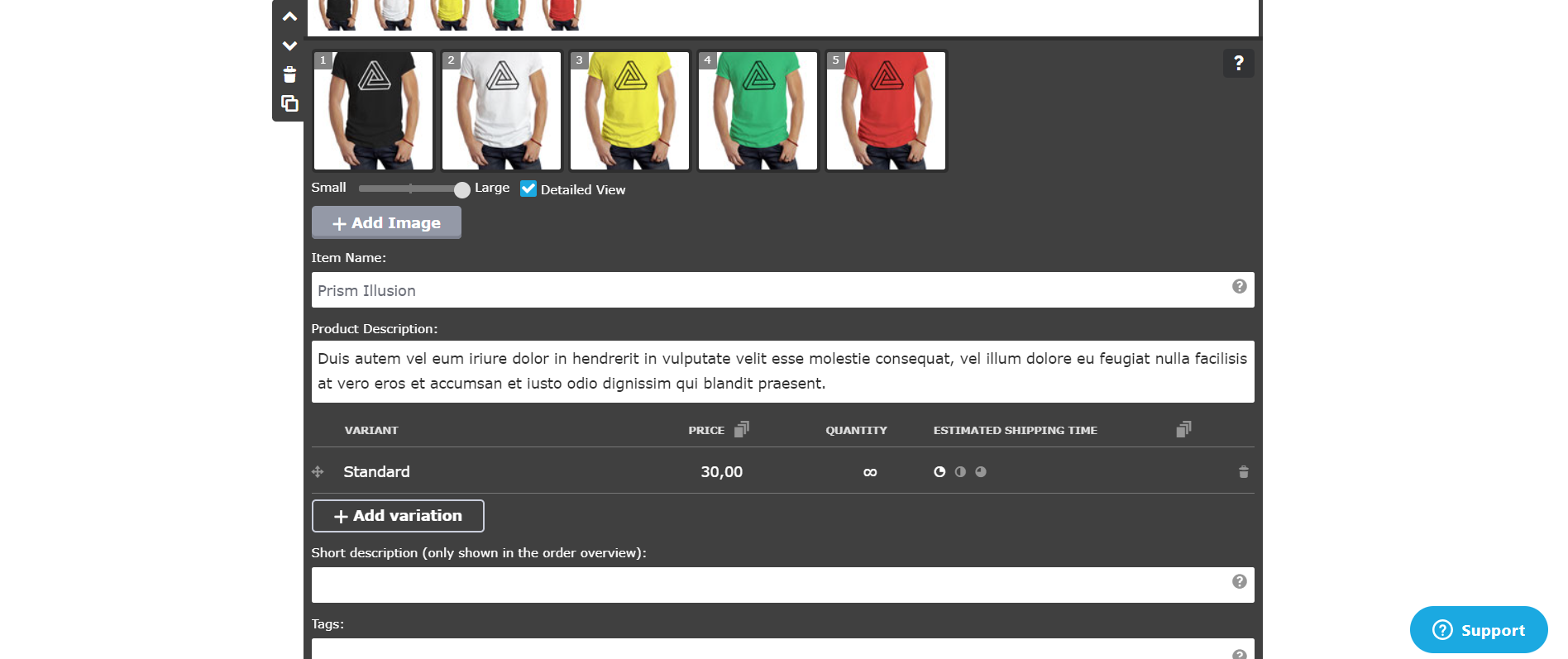
Ecommerce themes & templates
SubHub does not offer ecommerce specific templates. In contrast, Jimdo’s ecommerce templates offer a diverse range of pre-designed themes, ensuring a mobile-friendly and smooth shopping experience. The drag-and-drop interface allows for easy customization of colors, fonts, and layouts, while templates focus on showcasing products with dedicated sections for images, descriptions, and clear calls to action.
Product page customization
SubHub offers a range of product page customization options, allowing for the addition of physical items, digital downloads, and pay-per-view content. Features include the ability to manage product variants, upload images, and set visibility preferences. Users can also implement SEO strategies through meta tags and manage tax settings. Additional functionalities include member-specific discounts, image carousels, and individualized shipping costs.
Jimdo, on the other hand, allows users to edit text, add images, adjust layouts, and modify design elements like colors and fonts to showcase products effectively. This customization enhances the visual appeal and functionality of the online store, aiming to improve user experience and boost sales. Jimdo also offers additional features such as SEO tools and mobile responsiveness to ensure the product page performs well across different devices and search engines.
Payment processing
SubHub supports two main payment gateways: Stripe and PayPal, allowing for secure payment processing for subscriptions and store items using debit or credit cards. The platform itself does not charge commissions on transactions.
Jimdo facilitates payment processing through various popular gateways like PayPal, Stripe, Mollie, and more, depending on your location and plan. While Jimdo doesn’t impose transaction fees, individual payment gateways may have their own charges, typically ranging from 2% to 3% of the transaction amount plus a fixed fee. Additionally, certain Jimdo plans may offer free transactions per month, providing flexibility for users based on their plan details.
Website Editors
Website EditorsEvaluates the platforms’ website building and editing capabilities.Score Components:
- Customization tools (40%): Range and power of editing features.
- Editor usability (30%): User experience within the editor.
- Design flexibility (20%): Freedom in layout and design changes.
- Update and maintenance ease (10%): Simplicity of updating and maintaining the site.
 6.9
6.9
 7.8
7.8
🏆
Winner: Jimdo
. Jimdo, with a score of 7.8, offers two main modes: Jimdo Dolphin and Jimdo Creator. Dolphin, an AI-driven tool, is ideal for beginners and creates websites based on user responses to a series of questions, streamlining the web design process. On the other hand, Jimdo Creator provides a more traditional website building experience with greater customization options, including a drag-and-drop editor and HTML widgets, catering to users seeking more control over their site’s design.
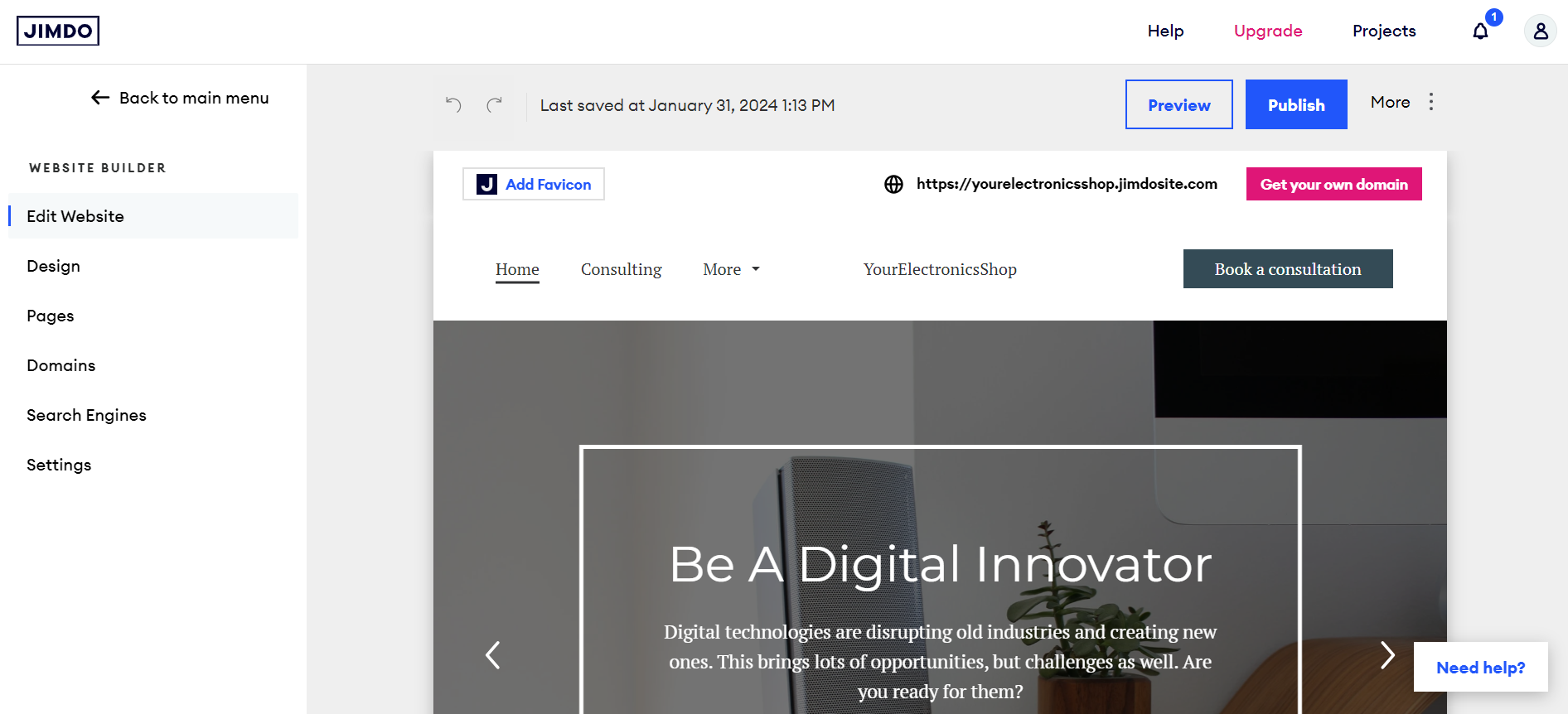
SubHub’s editor, scoring 6.9, is tailored for creating and managing membership sites, catering to content creators and entrepreneurs aiming to monetize their offerings. Its features encompass customizable templates, diverse content publishing options, and flexible subscription plans with seamless integration for recurring revenue through payment processors. Additionally, SubHub supports online course creation, provides marketing tools like landing page builders, and offers detailed analytics for monitoring website metrics.
Mobile editor/app
 4.0
4.0
 8.0
8.0
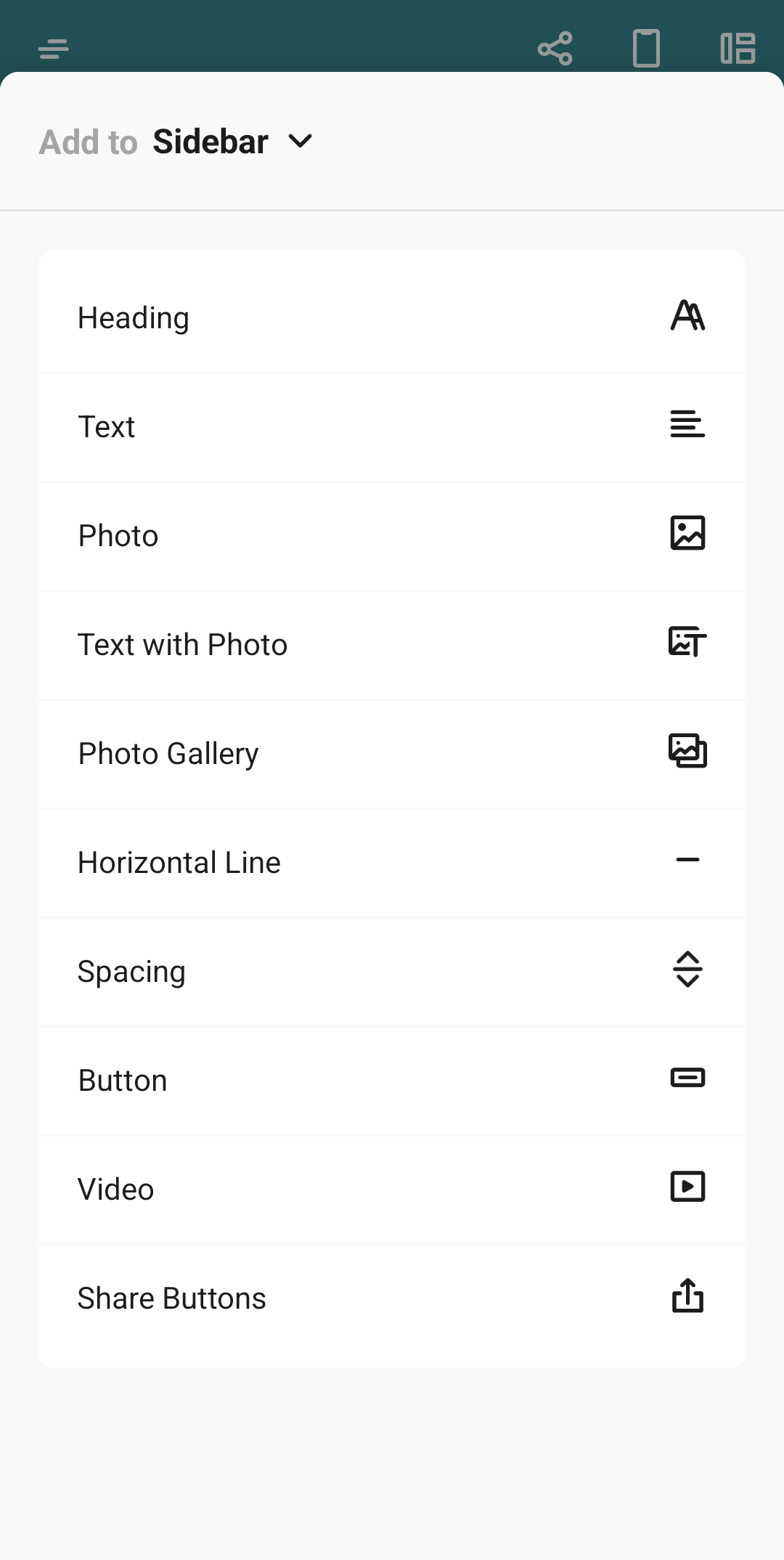
🏆
Winner: Jimdo
. Both SubHub and Jimdo offer mobile editing capabilities, but they differ significantly in their approach and functionality.
SubHub does not have a dedicated mobile editor app. Users can manage some content on their website using the mobile browser version, but it’s not possible to change the layout and design of the website on mobile. This limitation can be a significant drawback for users who need to make quick changes on the go.
On the other hand, Jimdo offers a mobile editor app, allowing users to create and manage their websites directly from their smartphones or tablets. This app provides a convenient way to edit and update your site on the go, including adding or modifying content, adjusting design elements, and managing your online store.
In summary, Jimdo’s dedicated mobile app offers a more comprehensive and flexible mobile editing experience, making it the clear winner in this category.
Product testing options
Product Testing OptionsAssesses the options for trying out platform features before commitment.Score Components:
- Trial quality (40%): Extent and usefulness of the trial or free version.
- Feature accessibility (30%): How many features are available to test.
- Trial duration (20%): Length of the trial period.
- Ease of transition (10%): Smoothness of moving from trial to paid plans.
 7.0
7.0
 6.4
6.4
Overall Result
:
SubHub wins
. SubHub scores 7.0, slightly higher than Jimdo’s 6.4 in product testing options. SubHub offers a 14-day free trial during which users can test all premium features. However, it does not have a free version. On the other hand, Jimdo offers a free version with basic features and a 14-day money-back guarantee for all paid plans, allowing users to test more advanced options.

|

|
|
|---|---|---|
|
Free Plan |
No |
Yes |
|
Trial Duration |
14 days | No, however they have 14 days money back guarantee |
|
Testing Premium Features |
During the free trial |
You can explore basic features with the free plan, and for more advanced options, you can test them by subscribing to any of the paid plans. |
|
Money Back Guarantee |
7-day money back guarantee |
14-day money-back guarantee for all paid plans |
Price
PriceLooks at the cost-effectiveness and value for money of each platform.Score Components:
- Plan value (40%): What each pricing tier offers.
- Transparency and clarity (30%): Clearness of pricing structures.
- Flexibility of plans (20%): Range of options to suit different budgets.
- Hidden costs (10%): Additional expenses not included in the plan.
 6.8
6.8
 7.5
7.5
Jimdo offers a wider range of pricing options, including a free plan, making it more accessible for users with different budgets. SubHub, on the other hand, focuses on providing comprehensive features for membership-based businesses, which is reflected in its higher pricing.

|

|
|
|---|---|---|
|
Free |
No offering at this amount. |
Play ($0/month): Basic, entry-level plan offering limited features, ideal for testing Jimdo’s capabilities. Includes 500MB storage and up to 5 website pages. Limited ecommerce functionality. |
|
$0-$10 |
No offering at this amount. |
Start ($9/month): Aimed at small projects or businesses just starting out. Provides 5GB of storage and up to 10 website pages, along with SEO tools for online visibility. Not directly focused on ecommerce. Value for price: 6.0 |
|
$10-$15 |
No offering at this amount. |
Grow ($15/month): Targets growing businesses needing more space and features. Offers more flexibility but still lacks dedicated ecommerce capabilities compared to the Business plan. Provides 20GB bandwidth with up to 50 website pages. Value for price: 7.0 Basic ($15/month): Up to five forwarding email addresses, up to 10 website pages, convenient payment methods. Value for price: 6.5 |
|
$15-$20 |
No offering at this amount. |
Business ($19/month): Designed for small to medium-sized online stores, offering ecommerce features without transaction fees. Includes selling on Facebook and Instagram, and various payment options. And up to 50 website pages. Value for price: 8.0 |
|
$30-$50 |
Starter ($47/month): Up to 500 members, 5 GB storage, secure payment processing, course builder, 5 landing pages, e-commerce. Value for price: 6.5 |
VIP ($39/month): Provides comprehensive features for large or expanding online stores, including unlimited storage and priority support and unlimited website pages. Includes professional design review and no transaction fees. Value for price: 9.0 Unlimited ($39/month): Offers unlimited bandwidth and storage, up to 20 forwarding email addresses and unlimited website pages. Includes priority support and professional design reviews. Value for price: 9.5 |
|
$90-$100 |
Pro ($97/month): Up to 2000 members, 50 GB storage, removes SubHub branding, 15 landing pages, along with Starter features. Value for price: 7.5 |
No offering at this amount. |
|
$100+ |
Premium ($147/month): Unlimited members, 200 GB storage, email white labelling, 30 landing pages, plus all Pro features. Value for price: 8.5 |
No offering at this amount. |
location. As a result in rare cases the prices displayed here can differ from the ones you see on their
websites.
Hosting quality
Hosting
qualityExamines the reliability and performance of the hosting solutions.Score Components:
- Uptime (40%): Consistency and reliability of website availability.
- Speed (30%): Loading times and performance.
- Bandwidth and storage (20%): Sufficiency of resources provided.
- Data centers (10%): Quality and distribution of hosting infrastructure.
 5.5
5.5
 6.7
6.7
🏆
Winner: Jimdo
Jimdo offers a more comprehensive hosting service with shared, cloud, and managed hosting options. It also provides a 99.5% uptime, although there’s no uptime guarantee. While Jimdo doesn’t disclose the exact locations of its data centers, it uses a distributed network of secure facilities across multiple regions. On the other hand, SubHub offers managed cloud hosting but doesn’t provide uptime statistics or guarantees, and doesn’t disclose the locations of its data centers. This lack of transparency gives Jimdo the edge in this category.

|

|
|
|---|---|---|
|
Do they offer hosting? |
Yes, with storage limitations depending on the plan |
Yes, included in all plans with varying storage and bandwidth |
|
Data Centers: |
Not disclosed |
Distributed network of secure facilities across multiple regions |
|
Type of hosting: |
Managed Cloud Hosting |
Shared Hosting, Cloud Hosting, Managed Hosting |
|
Uptime: |
Not provided |
99.5% |
|
Uptime Guarantee: |
No |
No |
Website Speed Optimization
Website Speed OptimizationEvaluates optimization of website loading timesScore Components:
- PageSpeed Score (30%): Google’s score indicating performance optimization.
- Loading Time (30%): The average time until a website is fully interactive.
- Mobile Optimization (15%): Optimization effectiveness for mobile devices.
- Resource Optimization (15%): Optimizing images, scripts, and other heavy resources.
- CDN Usage (10%): Use of CDN to enhance speed across geolocations.
 5.6
5.6
 7.6
7.6
🏆 Winner: Jimdo
Both SubHub and Jimdo prioritize website performance and page speed, but Jimdo has a more comprehensive approach to speed optimization, which gives it an edge over SubHub.

|

|
|
|---|---|---|
|
Focus |
Image Optimization, Caching, Mobile Optimized design |
Content Optimization, CDN, Image optimization, Caching, Mobile Responsive design |
|
Performance Tools |
Not specified |
Not specified |
|
Key Strategies |
Image Optimization, Caching, Mobile Optimized design |
Content Optimization, CDN, Image optimization, Caching, Mobile Responsive design |
|
Load Times |
Varies depending on optimization and website complexity |
Varies widely, dependent on optimization |
|
Page Speed Scores Range |
Varies depending on optimization and website complexity |
Varies; influenced by plugins, images |
|
Core Web Vitals Improvement |
Not specified |
Optimizing LCP, Enhancing FID, Improving CLS |
Jimdo’s approach to enhancing site speed includes content optimization, use of content distribution networks (CDN), image optimization, caching, and mobile responsive design. These strategies help to improve the load times and PageSpeed scores of websites built with Jimdo. In addition, Jimdo is focused on improving Core Web Vitals by optimizing the Largest Contentful Paint (LCP), enhancing the First Input Delay (FID), and improving the Cumulative Layout Shift (CLS).
On the other hand, SubHub’s strategies for speed optimization include image optimization, caching, and mobile optimized design. However, the load times and PageSpeed scores of SubHub websites vary depending on the level of optimization and the complexity of the website. SubHub does not provide any specific information on their Core Web Vitals improvements.
Get a head start on website creation with AI
Create a custom website tailored to your business needs 10X faster with 10Web AI Website Builder!
Plugins and integrations
Plugins and integrationsMeasures the range and effectiveness of additional plugins and integrations.Score Components:
- Variety of options (40%): Range of available add-ons.
- Integration smoothness (30%): Ease of integrating plugins into the site.
- Quality of plugins (20%): Functionality and reliability of the options.
- Custom integration capabilities (10%): Support for custom or third-party integrations.
 5.7
5.7
 7.4
7.4
🏆 Winner: Jimdo.
With a score of 7.4, Jimdo offers a wider range of plugins and extensions, including POWr and Elfsight, which provide a variety of free widgets for enhancing website functionality. SubHub, scoring 5.7, focuses on integrated functionalities for building membership-based websites, with limited third-party integrations. While SubHub’s simplicity and focus on membership sites might be appealing to some, Jimdo’s broader range of plugins and extensions make it a more versatile choice for many users.
Marketing Features
Design FunctionalitiesRepresents how well each platform allows for creative design and customization of websites.Score Components:
- Template Variety (30%): Range and quality of design templates.
- Customization (30%): Flexibility and options for design alterations.
- User Interface (20%): Ease and intuitiveness of the design process.
- Responsiveness (10%): Adaptability to different devices and screen sizes.
- Innovation (10%): Unique design features and tools.
 5.7
5.7
 7.2
7.2
🏆
Overall Winner: Jimdo
. Jimdo stands out with its more comprehensive marketing tools, especially in social media integration and ad campaign management. SubHub is strong in SEO and email marketing, ideal for content-driven strategies.

|

|
|
|---|---|---|
|
SEO Tools |
|
|
|
Email Marketing |
|
|
|
Blogging |
|
|
|
Social Media Integration |
|
Advanced integration for selling directly on social platforms |
|
Analytics and Reporting |
Detailed analytics for in-depth insights |
Basic analytics for website traffic and engagement |
|
Ads and Promotions |
Limited to promotional codes and coupons |
Comprehensive tools for promotions and ad management |
Customer Support
Customer supportEvaluates the quality and availability of support options.Score Components:
- Response time (40%): Speed of support responses.
- Support quality (30%): Effectiveness and helpfulness of the support.
- Availability (20%): Range of support channels (phone, chat, email).
- Resource richness (10%): Quality of self-help and educational materials.
 6.3
6.3
 6.8
6.8
🏆 Winner: Jimdo
. When comparing SubHub vs Jimdo, Jimdo takes the lead in customer support with a score of 6.8. Jimdo offers a variety of support channels, including email support, a call center, a comprehensive knowledge base, and social media support. Although it lacks live chat support, the availability of multiple contact methods ensures users can find assistance through their preferred channel.
SubHub, with a customer support score of 6.3, provides support primarily through email and a support portal for detailed queries. While it also offers an FAQ section for quick answers, the lack of more immediate support options like phone or live chat may be a limitation for some users. Despite this, SubHub’s focus on accessible and responsive email support helps address user concerns effectively.
Security
SecurityLooks at the platforms’ security measures and data protection.Score Components:
- Data protection (40%): Safeguards for user and customer data.
- SSL and encryption (30%): Implementation of secure connections.
- Compliance (20%): Adherence to industry security standards.
- Regular updates (10%): Frequency of security updates and patches.
 4.0
4.0
 8.3
8.3
🏆
Winner: Jimdo
. Jimdo takes a comprehensive approach to security, with a strong firewall, DDoS protection, HTTPS encryption for all traffic, and SSL certificates for domains. They also ensure GDPR compliance and have a dedicated team for legal and information security.
SubHub, on the other hand, does not provide detailed information about the security measures they employ. While they do emphasize compliance with GDPR and CCPA regulations in their privacy policy, the lack of transparency regarding website security measures is a concern.
AI Capabilities
AI capabilitiesMeasures the effectiveness of AI-driven features and tools.Score Components:
- Automation efficiency (40%): Impact of AI on streamlining processes.
- Personalization (30%): AI-driven customization for users or customers.
- AI-Assisted design (20%): Role of AI in website design and functionality.
- Data analysis (10%): Use of AI in interpreting user data and analytics.
 0
0
 6.0
6.0

|

|
|
|---|---|---|
|
Personalized Design |
|
Jimdo’s AI offers tailored design suggestions based on user inputs |
|
SEO Optimization |
|
|
|
Customer Behavior Analysis |
|
|
|
Sales Predictions |
|
|
|
Inventory Management |
|
|
|
Content Generation |
|
|
🏆 Winner: Jimdo
. Jimdo, with a score of 6.0, offers basic AI capabilities that assist in website creation and ecommerce. Its AI features include personalized design suggestions and image recommendations. However, it does not have a direct, dedicated content generation feature like some other website builders.

SubHub, on the other hand, does not have any AI capabilities. It focuses on providing tools tailored for content creators and entrepreneurs who aim to build a community and monetize their content. While SubHub’s features are useful for its target audience, it lacks the AI capabilities that can enhance the user experience and streamline the website creation process.
User Management
User ManagementAssesses the platforms’ capabilities in managing user roles, permissions, and accessibility.Score Components:
- Role Customization (40%): Flexibility in creating and defining user roles and
permissions. - Ease of Management (30%): User interface and tools for managing users.
- Access Control (20%): Effectiveness of access control measures for different user
levels. - Scalability (10%): Ability to manage a growing number of users efficiently.
 5.2
5.2
 5.8
5.8
🏆 Winner: Jimdo
. Both SubHub and Jimdo offer different approaches to user management.
- SubHub allows multiple user accounts, but does not specify how many accounts are supported.
- Jimdo’s Free, Start, and Basic Shop Plans allow website management by a single owner. The Grow Shop Plan permits two editors, including the account owner and one collaborator. The Business Plan extends collaboration to five editors, consisting of the account owner and four collaborators. The Unlimited Plan provides unlimited editors, fostering a collaborative team environment. The VIP Plan, designed for online stores, does not specify a limit on editors for websites.
SubHub User Roles and Access Levels:
| Role | Description | Access Highlights |
|---|---|---|
| Administrator | Full access to the platform except for Homepage and Course Editor. | Can manage all aspects of the platform, including content, store, and member management. |
| Content Management | Focuses on managing and organizing content within the platform. | Can access and manage content-related features but does not have access to Homepage or Course Editor. |
| Store (access only) | Specializes in handling the platform’s store features. | Limited to store management functions; no access to Homepage, Course Editor, or member management. |
| Member Manager (access only) | Oversees member accounts, roles, and subscriptions. | Can manage members and their subscriptions but cannot access Homepage, Course Editor, or store management. |
| Origin Admin Email | The initial administrator with the highest level of access, including Homepage and Course Editor. | Exclusive access to Homepage and Course Editor, on top of what the Administrator role provides. |
Jimdo does not provide a detailed table of user roles and access levels.
Additional Features

|

|
|
|---|---|---|
|
SSL Certificate |
|
|
|
Custom Domain |
|
|
|
Free Custom Domain Included |
|
|
|
International Domains |
|
|
|
Mobile Responsive |
|
|
|
Page Speed |
|
|
|
Website Builder Mobile App |
|
|
|
Convert a Website To An App |
|
|
|
Website Analytics |
|
|
|
Multilingual Sites |
|
|
|
Multiple Users |
|
|
User Feedback
User feedback on SubHub presents a mix of positive and negative experiences, emphasizing the platform’s feature-rich environment and customizable templates. Users appreciate the flexibility and the quality of customer service, highlighting the platform’s continual updates and support as key benefits. However, some users express dissatisfaction with aspects such as the platform’s interface, lack of community features, and service fees for ticket resale. Concerns were also raised about the custom design service and mobile-friendly solutions taking longer than expected.
Jimdo, a website builder platform, receives mixed reviews from users. Positive feedback highlights its ease of use, no-code editor, and quick website development for basic sites. However, criticisms include outdated design, limited templates, and concerns about pricing transparency. Some users appreciate it for simple projects, while others find it lacking for more complex websites. Common issues include restricted SEO in the free tier, support limitations, and late responses. The overall impression suggests Jimdo may suit beginners but could be less ideal for those seeking advanced features or modern designs.
The making of this blog
We followed a clear, step-by-step process to write and research this article.
FAQ
What are the main differences between SubHub and Jimdo?
Which platform is better for ecommerce, SubHub or Jimdo?
Can I build a membership site with Jimdo?
Is SubHub more expensive than Jimdo?
Which platform offers better customer support, SubHub or Jimdo?
How do SubHub and Jimdo compare in terms of website speed and optimization?
Which platform is better for beginners?











